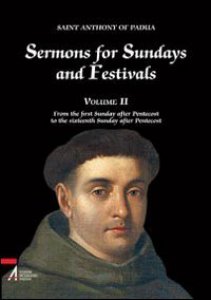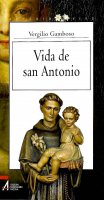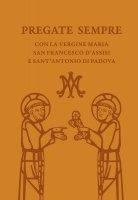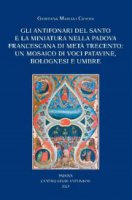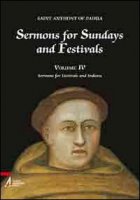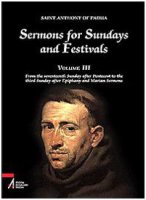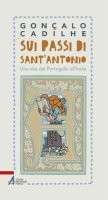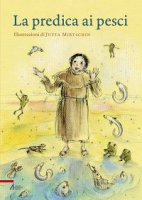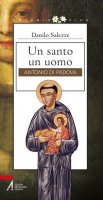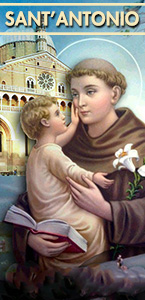La prima traduzione integrale in Inglese degli scritti di sant'Antonio, pubblicati nel 1979 da Centro Studi antoniani di Padova. Questo è il II di 4 volumi e va dalla I domenica di Pentecoste alla XVI dopo Pentecoste.
PREFACE
The time after Pentecost shows Antony's method in its most developed form. There are twenty-four Sundays, and these are grouped in fours, according to the Calendar months from June to November. This reflects the arrangement of the Old Testament readings in the Breviary of the time. Because in any actual year the number of Sundays in a Calendar month would have varied between four and five, and the date of Pentecost would also have varied, the correlation between Sunday Gospels and Old Testament books would never have coincided exactly with that proposed by Antony. We can be certain, then, that he regarded the Commentaries as simply examples of the kind ofthing preachers would be expected to apply in their own way. Antony provides short prefaces at the beginning of June, August, September, October and November explaining his scheme (July merely continues that begun in June).
As before, each Gospel is divided finto several clauses, closely related to a similar "concordant" division of the Epistle. For each Gospel clause, one or more passages from the book currently read at Mattins is presented as a "concordance" illustrating the same theme as the Gospel. Then the portion of the Epistle is introduced with the phrase, "The first (second, etc.) clause of the Epistle is concordant with this." The Introit is alluded to in one or other of the clauses, but no more. This pattem is repeated systematically in every clause for each of the twenty-four Sundays without exception. Neither before nor afterwards is Antony so scrupulous in keeping to it.
In June and July the Office readings are taken from the four books or Kings (the two books of Samuel, and two of Kings, in our modern terminology). Each book therefore provides examples for two Sundays. There was no Trinty Sunday in Antony's day, and so the sequence of Sunday Mass-readings is not quite that of the Tridentine M issai. On the first Sunday, the story of the rich man and the beggar Lazarus is read, with illustrations from the stories of Saul and David in the first book of Samuel.
On the second Sunday, the Gospel is that of the great supper, which Antony illustrates wth further stories about King David. The Epistle follows on from that of the preceding Sunday, and is taken from the first letter of Jhon. The great supper represents our union with God: it is therefore twofold, a suppor of penitence in this fife, and of glory herealter. It is foreshadowed in the gifts that the mother (of Samuel offered to God. The distractions that prevent the guests from attending are like thePhilistines that assailed Saull, while the substitution of other guests resembles David's adoption of an Egyptian slave.
The Gospel of following Sunday, the third alter Pentecost, relates Jesus's response to the criticisism of the Pharisees in the parabole the lost sheep. Christ fulfils the figure or David, who gathered the tribes around him, and made his lament over Saul and Jonathan. The woman who losti a coin and sought for it is foreshadlowed in the woman who pleaded for Absaloin's lite, whereas the vengeful Joab represented the devil.
Christ's teaching on mercy on the fourth Sunday is illustrated by the merciful action of David towards Saurs heir, and towards the man who curses him; but there are warnings against complacency in the fate of Absalom. David climning the Mount of Olives recalls the Passion of our Lord.
In July, we turn to the books of Kings. Christ teaching the crowds on the fifth Sunday alter Pentecost is the true Solomon dispensing wisdom. The use of Peter's boat as a pulpit recalls Solomon's fleet of ships hringing treasure back to Jerusalem. Examples are also taken from the stories of the prophets Elijah and Elisha.
On the sixth Sunday, further stories of the prophets and of Solomon illustrate Christ's teaching on justice and true worship, but an image of the spiritual altar of sacrifìce Antony moves outside the usual cycle of readings and takes his parallel from Exodus.
On the seventh and eighth Sundays we hear of the miracle of the loaves, and or Christ's warning against false prophets. These two Gospels have concordances in the prophet Elisha (with stories or hunger, of healing and of miraculous feeding), and in stories or other true and false prophets, and or the danger of neglecting God's merci lui guidante.
AUGUST
During the month of August, Antony takes concordances from the Wisdom literature, or "the hooks or Solomon", as he calls them. On the first Sunday (the ninth after Pentecost) the story of the dishonest steward is mainly illustrateci by extracts from the Book of Proverbs. The story of Jesus weeping over Jerusalem, on the following Sunday, evokes the Book of Ecclesiastes, wth its reminders of vanity and emptiness or human activity. There are also Iessons in the books of Wisdom and Ecclesiasticus (Sirach).
On the eleventh Sunday afer Pentecost (wth only two clauses, the shorest of these commentaries) the story or the Pharisce and the tax-colleclor is also iIluslratcd from Ecclesiasticus. The month ends with the cure or the deaf-mute, and Proverbs and Ecclesiasticus again largely provide the concordances (with a brief reference to Canticles). However, although the Wisdom literature sets the tone for the month, Antony draws extensively from other parts or the Old Testament as well.
The first two weeks are dominated by illustrations from the Book of Job, which was especially dear to Antony because of his devotion to St Gregory's moral commentaries on the book. The remainder of the month has concordances from the deutero-canonical books of Tobias and Judith, and from the book of Esther. The Gospels are those of the good Samaritan (with a preamble on the old Law and the new); the healing of the ten lepers, of whom only the Samaritan returned to give thanks; a warning against trying to serve two masters; and the raising of the widow's son.
During this month there are interesting differences in the way Antony uses the Epistles, from Galatians and (on the last Sunday) from Ephesians. The extract from Galatians is treated in a quite perfunctory manner on the thirteenth Sunday after Pentecost (in contrast with the very extensive concordances from Job), whereas on the fourteenth it is treated in some detail. Again, it is treated only briefiy on the fifteenth Sunday, while the extract from Ephesians on the sixteenth is given more attention. Much depends on how well Antony is able to relate the Epistle to the main theme, since it is simply given and he does not have the freedom of choice as he does with the Old Testament.
PROLOGUE FOR JUNE AND JULY
I began this work, trusting in the grace of the Word Incarnate, who 'gives Wisdom a voice' and who makes the tongues of infants to speak'; whose band, as Ezekiel says, is under the wings of the living creatures.' He is the First Principle of all creation, and with him as guide and pathway I pope to bring it to completion, to his honour and for the benefit of the faithful. At the start of this work I proposed to take the Sunday Gospels, as they are appointed throughout the year, and concord with them the writings of the Old and New Testaments read in Church, the Sunday Epistles and the Introits of the Mass. And if I could not do this fully, then at least I would do so in part. Note now, then, that from the first Sunday after Pentecost until the first Sunday ofAugust, the four books of Kings are read in Church.
There are eight Sundays in this period, so I want to arrange the material in such a way as to take various stories from each book, concording each book with two sets of Sunday Gospels and other readings, as seems appropriate.



